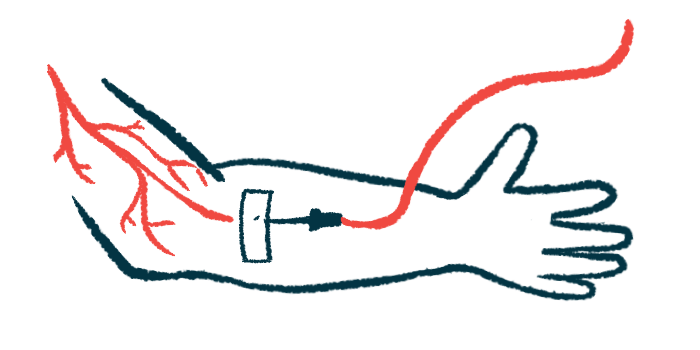Possible treatment of ACE inhibitor-induced angioedema symptoms ID’d
Tranexamic acid also may prevent intubation, review of published studies notes

Treatment with tranexamic acid may ease symptoms and prevent intubation in people who develop angioedema after receiving certain high blood pressure medications called angiotensin-converting enzyme (ACE) inhibitors, a review of published studies shows.
The findings also suggest tranexamic acid may be more advantageous than other therapies currently used to treat ACE-induced angioedema, but future clinical trials are needed to confirm the safety and efficacy of the medication in this population.
The study, “Tranexamic Acid for ACE inhibitor-induced Angioedema,” was published in the journal Clinical and Experimental Emergency Medicine.
Angioedema is marked by swelling in the deep layers of the skin, caused by a build-up of fluid that escapes from leaky blood vessels. Symptoms can affect any part of the body, but swelling is more commonly observed in the face, lips, tongue, throat, and sometimes in the hands and feet.
The disease can be triggered by a variety of factors, including as a side effect of certain medications, most often ACE inhibitors. Used to treat high blood pressure and heart failure, ACE inhibitors work in part by increasing the level of bradykinin, a protein that dilates (widens) blood vessels.
However, bradykinin also increases the permeability of blood vessels, leading to fluid leaking into tissues.
Reducing the breakdown of blood clots
When a blood clot is formed to stop bleeding, a protein called plasminogen is activated and converted into an enzyme called plasmin. Plasmin helps break down the clot, allowing the blood to flow freely again.
Tranexamic acid is a medication usually used to treat excessive bleeding. It can stop or slow the formation of plasmin by binding to plasminogen, thereby reducing the breakdown of blood clots.
Plasmin is also a natural trigger for the production of bradykinin. Thus, while tranexamic acid is not approved to treat angioedema, it is sometimes used off-label to prevent acute swelling attacks in people with an inherited form of the disease called hereditary angioedema.
However, how well tranexamic acid works for ACE-induced angioedema is unclear. This form of the disease “remains a key unmet medical need, accounting for approximately 30-40% of angioedema emergency department visits,” the researchers wrote.
Data review of tranexamic acid treatment in ACE-induced angioedema patients
To know more, researchers in the U.S. reviewed data from studies published in the last 20 years that had reported on the effects of tranexamic acid in people with ACE-induced angioedema. A total of seven studies were identified, including three retrospective studies, one case series, and three case reports.
In these studies, patients were given different doses of intravenous (into-the-vein) tranexamic acid, ranging from 0.5 to 4 grams per emergency event. Most received 1g of the medication.
In the largest study, comprising 33 patients, tranexamic acid was used as a first-line treatment. Most patients (81.8%) experienced a significant improvement in symptoms such as swelling and difficulty breathing with the medication alone. About 40% felt better within an hour of taking the drug.
About 1 in 5 patients needed additional treatment with other angioedema therapies. But no patient died or required intubation, which can help with breathing when swelling blocks the airway.
In a smaller study with 16 patients, symptoms either improved or were stable in all patients after receiving tranexamic acid, and most (87.5%) did not need intubation.
In another study, 25 patients received tranexamic acid during an angioedema attack. In most (92%), symptoms improved at least in part, and in nearly half (48%), they completely went away.
The case series included 11 patients treated with tranexamic acid, none of which needed intubation after treatment — although two had been intubated before starting on the therapy. Similarly, symptoms improved at least partially and there were no intubations or deaths in the three case reports.
“Tranexamic acid has shown promise in resolving angioedema symptoms and preventing intubations,” the researchers wrote. “Its availability, low cost, and safety profile supports its use for [ACE-induced angioedema] to improve symptoms and complications in an emergency setting.”
However, “future randomized controlled trials of [tranexamic acid] … are needed to further support its efficacy and safety in this indication,” the researchers wrote.






